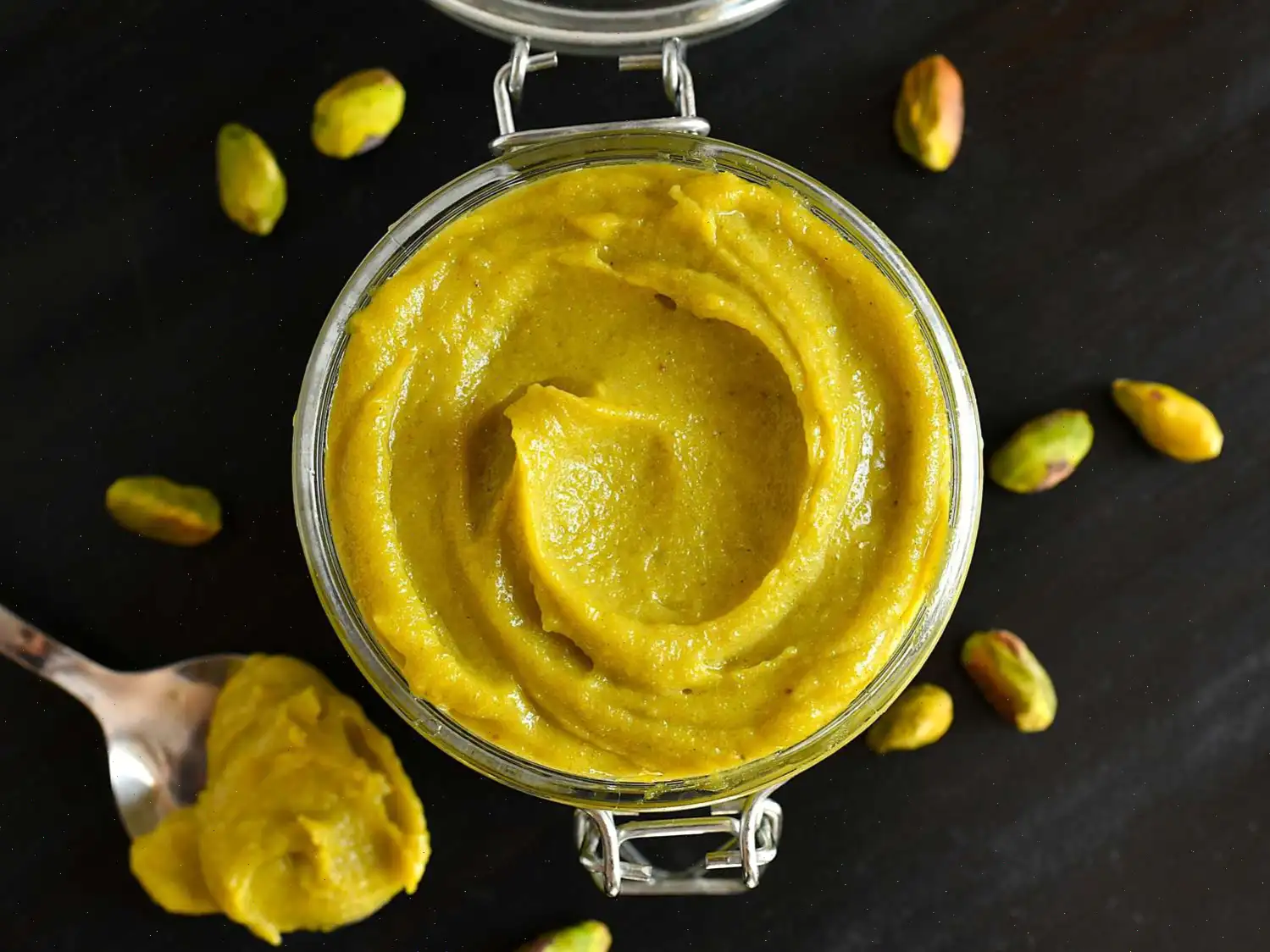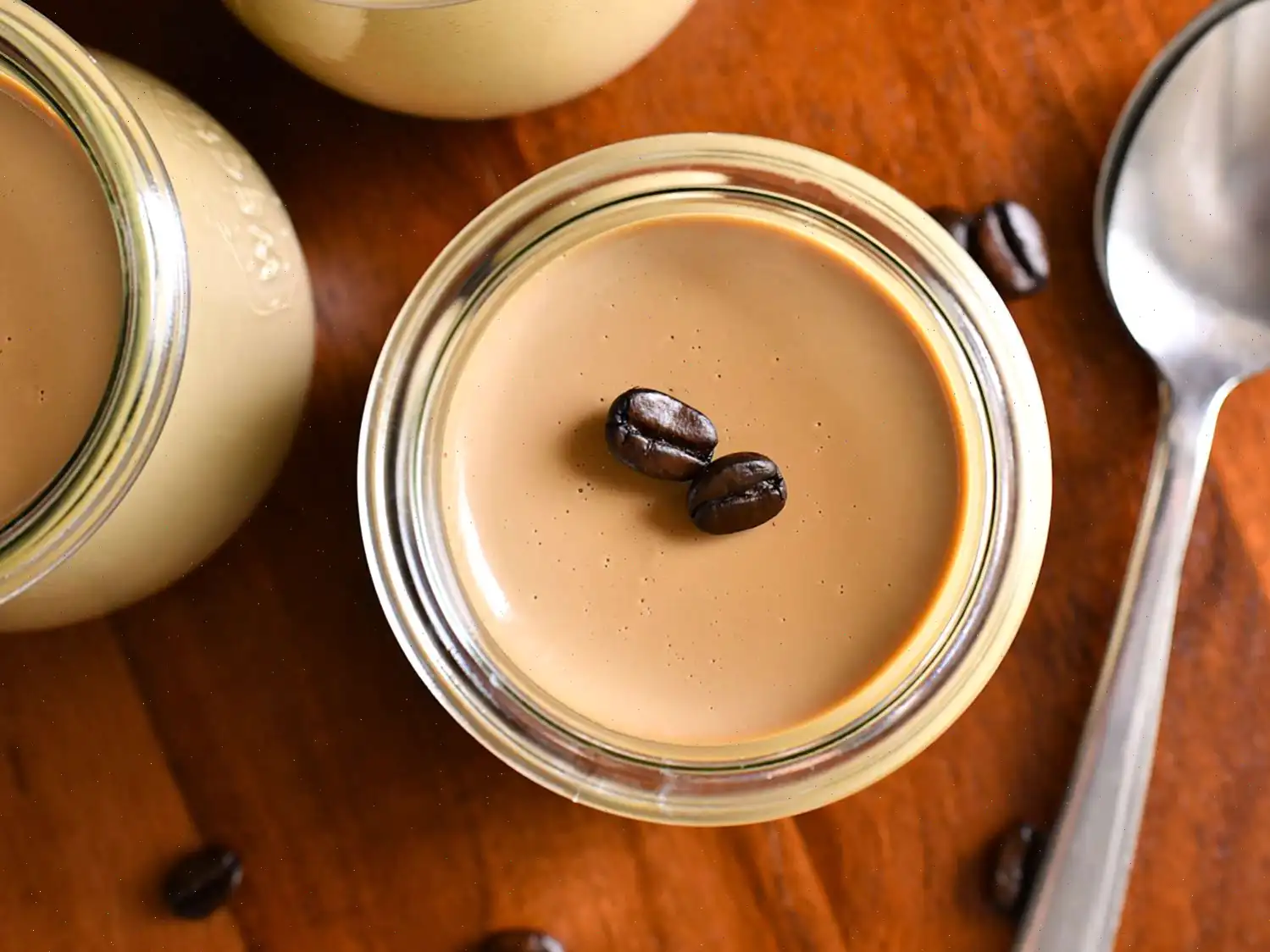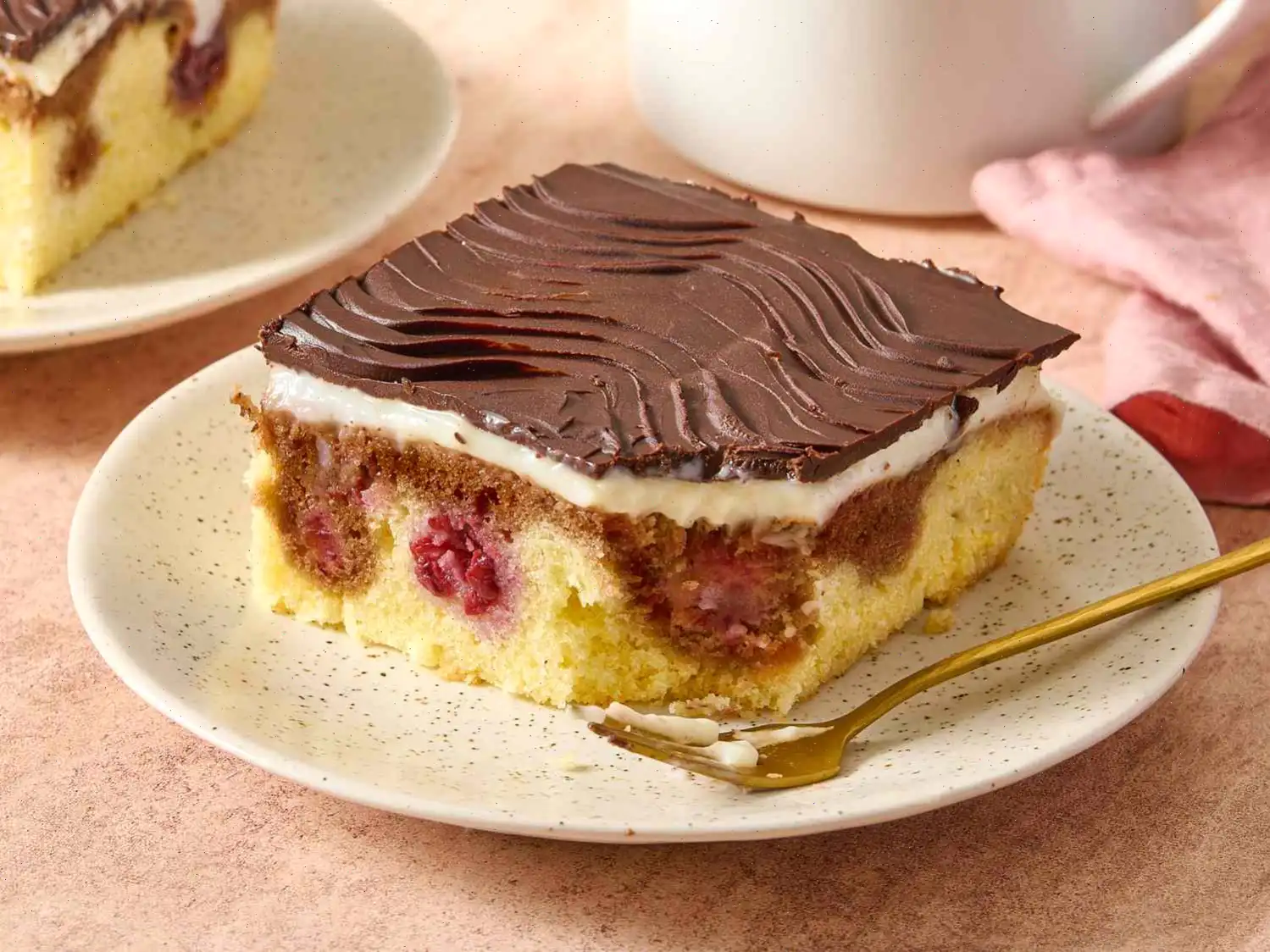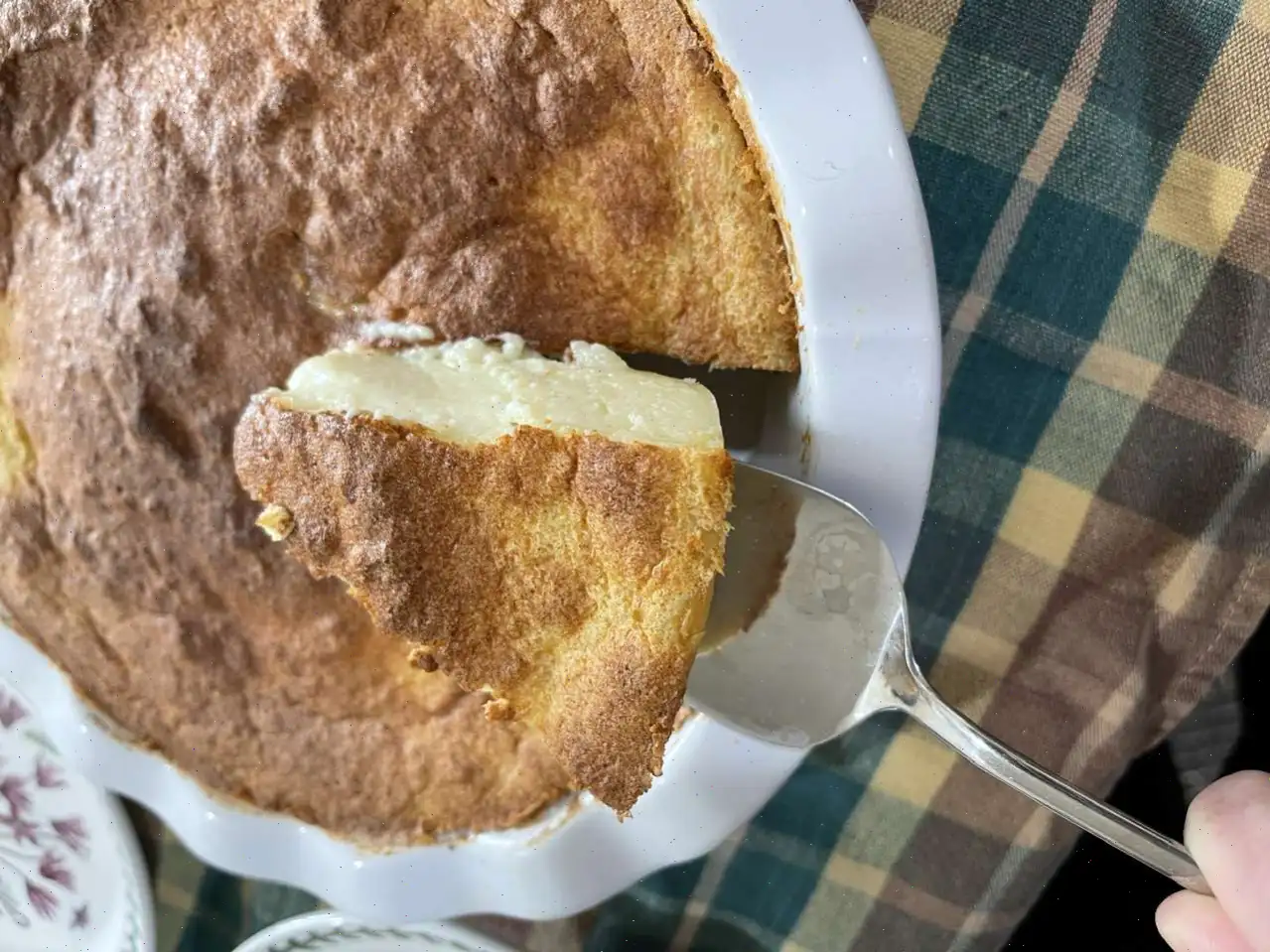
Homemade Pistachio Cream Recipe
Ingredients:
- 1 1/2 cups raw unsalted shelled pistachios
- 3/4 cup whole milk, divided
- 1 cup white chocolate chips
- 2 tablespoons unsalted butter
- 2 tablespoons confectioner's sugar, or to taste
- 1/2 teaspoon kosher salt, or to taste
- 1/2 teaspoon almond extract, or to taste
- 1/4 teaspoon vanilla extract, or to taste
Directions:
Step 1: Bring a pot of water to a boil over medium heat. Add pistachios and boil for just 2 minutes. Drain the pistachios, rinse them thoroughly with cold water, and drain again.
Cooks Note: Only boil the pistachios for 2 minutes. Overcooking them will make the skins harder to peel. Depending on the pistachios, peeling can take time, sometimes up to an hour. Removing as much of the skin as possible is important to avoid a musty flavor and gritty texture in the cream.
Step 2: Lay the pistachios on a clean kitchen towel. Fold the towel in half over the pistachios and rub vigorously to remove the skins. You may want to use another clean towel for this step to help dry the pistachios and make them easier to handle.
Step 3: Carefully pick through the pistachios, separating them from their skins. Remove any remaining skins stuck to the pistachio meats. Discard the skins and place the peeled pistachio meats into a high-powered blender.
Step 4: In a small microwave-safe bowl, combine 1/4 cup of milk, white chocolate chips, and butter. Microwave in 30-second intervals at 50% power, stirring after each interval, until the butter and chocolate chips melt and the mixture becomes smooth.
Step 5: Add the remaining 1/2 cup of milk, powdered sugar, salt, almond extract, and vanilla extract to the blender. Pour in the melted white chocolate mixture. Blend starting on low speed and gradually increasing to high. Blend for 2 to 3 minutes, scraping down the sides of the blender jar as needed. If the mixture is too thick, add milk, one tablespoon at a time, until you reach the desired consistency.
Step 6: If the mixture becomes too hot, pause blending, as heat may cause it to separate. Once smooth, pour the pistachio cream into a glass jar or and let it cool slightly. The cream is ready to use immediately, or you can cover it and refrigerate it. It will keep for 1 to 2 weeks.
Cooks Notes:
- If you can't find raw shelled pistachios, you can use unsalted, roasted shelled pistachios. The resulting cream will be darker, but you can add a drop or two of blue food coloring to adjust the shade of green.
- The cream's flavor can be customized to your taste. Feel free to adjust the amount of confectioners sugar, salt, almond extract, and vanilla. If you have pistachio extract, you can add it for extra flavor.
- While a food processor can be used, the cream may not be as smooth as when using a blender. Blending time may vary depending on the power of your machine, so you may need to process longer or take breaks to prevent overheating.
- For easier cleanup, fill the blender cup with warm soapy water and run it on high speed for a minute.
Nutrition Facts (per serving):
- Calories: 166
- Total Fat: 12g (15% DV)
- Saturated Fat: 5g (24% DV)
- Cholesterol: 10mg (3% DV)
- Sodium: 116mg (5% DV)
- Total Carbohydrate: 13g (5% DV)
- Dietary Fiber: 1g (4% DV)
- Total Sugars: 11g
- Protein: 3g (7% DV)
- Calcium: 57mg (4% DV)
- Iron: 0mg (3% DV)
- Potassium: 164mg (3% DV)
Percent Daily Values are based on a 2,000 calorie diet. Your daily values may be higher or lower depending on your calorie needs.
The Homemade Pistachio Cream is a delicious and creamy spread made primarily from pistachios, white chocolate, and milk. Its rich texture and sweet-nutty flavor make it a perfect treat for dessert lovers, pastry chefs, and home bakers alike. But beyond its flavor, this dessert has an interesting background, with regional variations, and fascinating facts tied to its creation. Lets dive deeper into its origins and unique characteristics.
History of Pistachio Cream
The pistachio, native to the Middle East and Central Asia, has been enjoyed for thousands of years. However, the idea of making a cream out of this nut likely originated in the Mediterranean region, where pistachios are a staple ingredient in various sweet and savory dishes. Pistachio creams, or pastes, have long been used in Italian and French cuisines, particularly in desserts like gelato, pastries, and tarts.
As culinary techniques evolved, pistachio cream became a sought-after addition to gourmet kitchens. In modern times, the spreadable version of pistachio cream that we know today has grown in popularity across various regions, with recipes adapting to local tastes and ingredient availability. The creation of homemade pistachio cream offers a way to enjoy this delicious treat without relying on commercial versions that often contain additives and preservatives.
Regional Variations
While pistachio cream has roots in Mediterranean cooking, the recipe can vary significantly from region to region. In Italy, pistachio cream (or crema di pistacchio) is commonly made with roasted pistachios, offering a more intense flavor. This version is often used as a filling for pastries or spread on bread. In contrast, French pistachio cream, particularly in the form of pistache pt, is typically smoother and lighter, often incorporating additional flavors such as orange or vanilla.
In the Middle East, pistachio paste is sometimes combined with rose water or orange blossom water to add a floral note to the cream. This regional difference highlights how cultural influences shape the preparation and flavor profiles of similar dishes, making pistachio cream a versatile ingredient in global cuisine.
How It Differs from Similar Dishes
Pistachio cream stands out from similar nut-based spreads, such as almond butter or hazelnut spread, due to its unique flavor profile. While almond butter has a more neutral, sometimes slightly bitter taste, pistachio cream has a rich, buttery texture with a slightly sweet and earthy flavor that comes from the pistachios themselves. Moreover, pistachio cream often incorporates other ingredients like white chocolate, butter, and almond or vanilla extracts, which add complexity and sweetness that differentiate it from other nut butters.
Additionally, unlike typical nut butters, which tend to be thick and more difficult to spread, pistachio cream is smoother and more versatile. It can be used in a wide range of applications, from drizzling over cakes and ice cream to spreading on toast or using as a filling in pastries.
Where Its Typically Served
Homemade pistachio cream is often used as a topping or filling for a variety of desserts. Its a favorite in Mediterranean and Middle Eastern desserts, commonly seen in pastries like baklava or as a filling in cannoli and tarts. In Italy, its often found in gelato shops, where pistachio is a beloved flavor. Additionally, it can be served as a spread on warm, fresh bread or croissants, making it a luxurious addition to breakfast or brunch.
In more recent years, pistachio cream has made its way into American and international kitchens, where its being incorporated into modern desserts like cupcakes, cheesecakes, and macarons. It also pairs beautifully with fresh fruit, particularly berries and pears, and can even be used as a dip for sweet biscuits or cookies.
Interesting Facts About Pistachio Cream
- The pistachio nut is one of the oldest flowering trees in the world, dating back over 9,000 years.
- While pistachios are commonly associated with Middle Eastern and Mediterranean cuisine, they are actually native to Central Asia and were introduced to the Mediterranean through trade.
- In some cultures, pistachio cream is considered a luxurious ingredient due to the high cost of pistachios. The nuts are not only rich in flavor but also packed with essential nutrients like protein, fiber, and healthy fats.
- Pistachio cream can also be made with roasted pistachios for a deeper, slightly smoky flavor, but the homemade version made with raw pistachios results in a smoother and more delicate cream.
- Because pistachios are naturally sweet and nutty, the cream can be made without the need for added sugars or sweeteners, making it a healthier alternative to some other nut-based spreads.
Whether you use it in desserts or enjoy it as a spread, homemade pistachio cream is a delightful treat that offers a window into the rich culinary traditions of the Mediterranean and Middle East. Its versatility, rich flavor, and historical significance make it a unique and timeless ingredient in kitchens around the world.
You can listen to this recipe in AI audio format. Simply click the play button below to listen to the content in a format that suits you best. It’s a great way to absorb information on the go!








